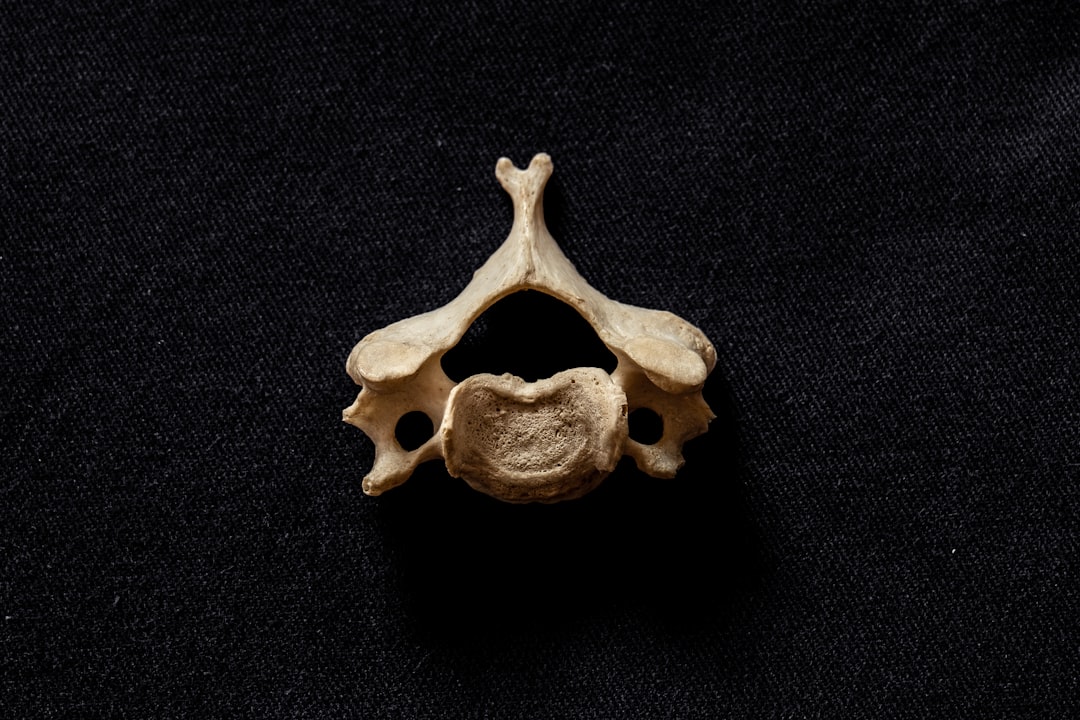 Photo by Meta Zahren
Photo by Meta ZahrenOriginally Posted On: Spondylolysis Treatment | First a Conservative approach to manage pain (scoliosisinstitute.com)
Spondylolysis Definition
Spondylolysis, also known as a Pars Defect, occurs when a small, thin portion of bone that connects two vertebrae (known as the Pars Interarticularis) cracks or fractures. This can weaken the bones of the spine and lead to instability, which can cause one vertebra to slip down over another if left untreated.
Spondylolysis Treatment OptionsSpondylolysis treatment is usually focused on managing any pain and promoting healing to help patients get back to their daily routine as soon as possible. Thankfully, spondylolysis doesn’t normally cause spinal cord injury or nerve damage.
Depending on the degree of pain and the severity of the fracture, treatment usually begins with:
- Taking a break from any sports
- Non-steroidal anti-inflammatory drugs (NSAIDs)
- Heat/cold therapy
- Physical therapy to strengthen core muscles
In cases where the pars interarticularis is severely damaged, surgery to repair and stabilize the pars may be necessary to prevent any further injury.
Non-surgical Spondylolysis TreatmentMost patients respond well to non-surgical treatment, and at Southwest Scoliosis Institute, Doctors Hostin, Kishan, and Wiesman always try to exhaust all avenues of conservative treatment before considering surgery.
This usually starts with medication to reduce pain and inflammation using over-the-counter nonsteroidal anti-inflammatory drugs (NSAIDs) like ibuprofen, naproxen, or acetaminophen. Patients are also advised to take a break from sports and other strenuous activities.
Conservative spondylolysis treatment usually involves strengthening the core muscles to minimize the chances of reinjuring the spine and may include specific exercises and physical therapy. Hot and cold therapy, ultrasound, electrical stimulation, and other therapies may also be recommended to reduce the pain and muscle spasms that often accompany spondylolysis.
If necessary, the physicians at Southwest Scoliosis Institute will administer spinal injections (blocks) to relieve some of the pain. This involves injecting a corticosteroid into the area around the spinal nerves (epidural) or between vertebrae (facet joints). Patients may require just a single injection or several over time to help reduce pain and inflammation.
Spondylolysis SurgerySpondylolysis rarely requires corrective surgery. However, if the pain, spasms, or slippage do not get better or increase after a period of conservative treatment, your physician may discuss potential surgical options. The goal of spondylolysis surgery is usually to stabilize the spine and prevent or repair any slippage of vertebrae, as well as to prevent the condition from progressing any further.
Spinal fusion. Fusion surgery restores stability to the spine and prevents the vertebrae from putting pressure on or doing damage to the spinal cord and surrounding nerves. A fusion procedure involves removing any loose bone fragments and using a bone graft and specially designed screws and rods to fuse the two vertebrae. In cases involving spondylolisthesis, the bones may need to be realigned depending on the severity of the slippage.
Pars repair. In some cases, a pars fracture can be repaired without needing to fuse the vertebrae together. The orthopedic surgeon carefully removes any scar tissue that may have developed at the fractured vertebrae and stabilizes the two sides of the fracture to restore normal anatomy.
Who gets Spondylolysis?Spondylolysis usually affects children and adults younger than 26 years old, and it’s more common in those who play sports that put a lot of stress on the lower back or cause them to hyperextend their back. This includes things like gymnastics, weightlifting, and even football, and the condition occurs more often in boys than in girls.
What are the Symptoms of Spondylolysis?Many people who develop spondylolysis only show minor symptoms. Some never have any symptoms, but the condition is discovered in an X-ray for an unrelated condition or injury. Because it occurs most often in the lumbar spine, low back pain is the most common symptom.
The symptoms of spondylolysis often vary from patient to patient, but generally include:
- Persistent lower back pain
- Pain that radiates to the buttocks/back of the thighs
- Stiffness in the back or leg muscles
- Hamstring muscle tightness
Low back pain due to spondylolysis often spreads across the lower back and might feel like a muscle strain. It often gets worse when the person engages in vigorous exercise or activity and better with rest.
How is Spondylolysis Diagnosed?In order to diagnose spondylolysis, the physicians at Southwest Scoliosis Institute begin by carefully reviewing your medical history, after which they will perform a thorough physical examination.
The doctor may perform a one-legged hyperextension test, which requires patients to stand on one leg and lean back. If this causes pain on the side they are standing on, it is a good indication of spondylolysis on that side. Patients may test positive on one side, both, or neither.
If spondylolysis is suspected, your physician may order X-ray imaging of your back using our state-of-the-art EOS X-ray imaging system. This is especially useful when treating children because this system uses an extremely low dose of radiation in order to take images of the bones.
It also takes images in multiple positions, so patients can stand or sit depending on what is more comfortable for them without the need to lie down during the exam. However, it can sometimes be difficult to spot a crack and/or slippage on an X-ray image, so additional tests may be required to make a definitive diagnosis.
Computed tomography (CT) scans can show a crack or defect in the bone more clearly, and a magnetic resonance imaging (MRI) scan may be ordered to view the soft tissue structures of the spine (including the discs between the vertebrae, as well as any affected nerves) and their relationship to the fracture – as well as whether any slippage occurred.
If you or your loved one is suffering from scoliosis, spondylolysis, or another complex spine condition, there is hope. We can help. Call Southwest Scoliosis Institute at 214-556-0555 to make an appointment today.












